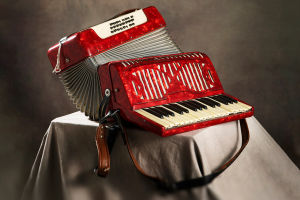Indonesia, an archipelago with a rich tapestry of cultures and traditions, is home to an array of unique musical instruments.
A traditional stringed instrument from Rote Island in East Nusa Tenggara (NTT), the Sasando, with its distinctive design and melodic sound, is not only a symbol of the region's cultural heritage but also a testament to the ingenuity and artistry of its people.
Origins and History
The Sasando, also known as Sasando Rote, has a history dating back to the 7th century, with its name derived from the Rote word "sasandu," meaning "vibrating" or "sounded instrument." According to local legend, the instrument was first created by a young man named Sangguana. One night, Sangguana dreamed of playing beautiful music on an unfamiliar instrument. When he woke up, he began to craft an instrument based on his dream, leading to the creation of the Sasando.
The Sasando has been a vital part of the cultural fabric of the Rote people. It is traditionally played during various ceremonies and events, such as weddings, funerals, and local festivals. The instrument's enchanting sound has made it an integral part of the region's musical heritage, captivating audiences both locally and internationally.
Design and Structure
The Sasando's design is unique and immediately recognizable. The instrument consists of a bamboo tube, which serves as the main body. This tube is fitted with several wooden pieces that act as bridges for the strings, which are made of palm leaves or modern nylon. The number of strings can vary, but traditionally, a Sasando has between 28 to 56 strings.
What sets the Sasando apart from other stringed instruments is its resonator. The bamboo tube is encased in a fan-like structure made from lontar (palm) leaves. This resonator amplifies the sound produced by the strings, giving the Sasando its distinctive, melodious tone. The fan-like shape not only enhances the instrument's acoustic properties but also gives it a visually striking appearance.
Playing Technique
Playing the Sasando requires skill and dexterity. The musician plucks the strings with both hands, similar to playing a harp. However, the Sasando's arrangement of strings and its cylindrical body requires a unique hand positioning and plucking technique. The musician's fingers must navigate the strings' varying lengths and tensions to produce the desired notes.
The Sasando's music is characterized by its gentle, flowing melodies. The instrument is often used to play traditional Rote songs, which are typically slow and soothing. However, contemporary musicians have also experimented with the Sasando, incorporating it into various genres and styles, thus expanding its musical repertoire.
Cultural Significance
The Sasando is more than just a musical instrument; it is a symbol of the Rote people's identity and heritage. It reflects the region's history, traditions, and artistic creativity. The instrument's unique design and the craftsmanship involved in its creation highlight the resourcefulness and ingenuity of the Rote people.
In recent years, there has been a growing interest in preserving and promoting the Sasando. Various cultural organizations and musicians have taken steps to ensure that this traditional instrument continues to thrive in modern times. Efforts include teaching the younger generation how to play the Sasando, organizing cultural festivals, and promoting the instrument on national and international stages.
Challenges and Preservation
Despite its cultural significance, the Sasando faces challenges in today's rapidly changing world. Modern influences and the prevalence of Western musical instruments have led to a decline in the traditional craft of Sasando-making. Additionally, the intricate process of creating a Sasando, coupled with the scarcity of materials like lontar leaves, poses a threat to the instrument's continuity.
To address these challenges, efforts are being made to preserve the Sasando and its traditional craftsmanship. Local governments, cultural institutions, and communities are working together to promote the instrument through education and cultural exchange programs. By raising awareness about the Sasando's cultural importance, they hope to inspire a new generation of musicians and craftsmen to carry on this rich tradition.
The Sasando is a unique and treasured musical instrument from East Nusa Tenggara, embodying the rich cultural heritage of the Rote people. Its distinctive design, melodious sound, and cultural significance make it a symbol of the region's artistic ingenuity.
As efforts to preserve and promote the Sasando continue, this traditional instrument will undoubtedly remain a cherished part of Indonesia's cultural landscape, enchanting audiences for generations to come.


